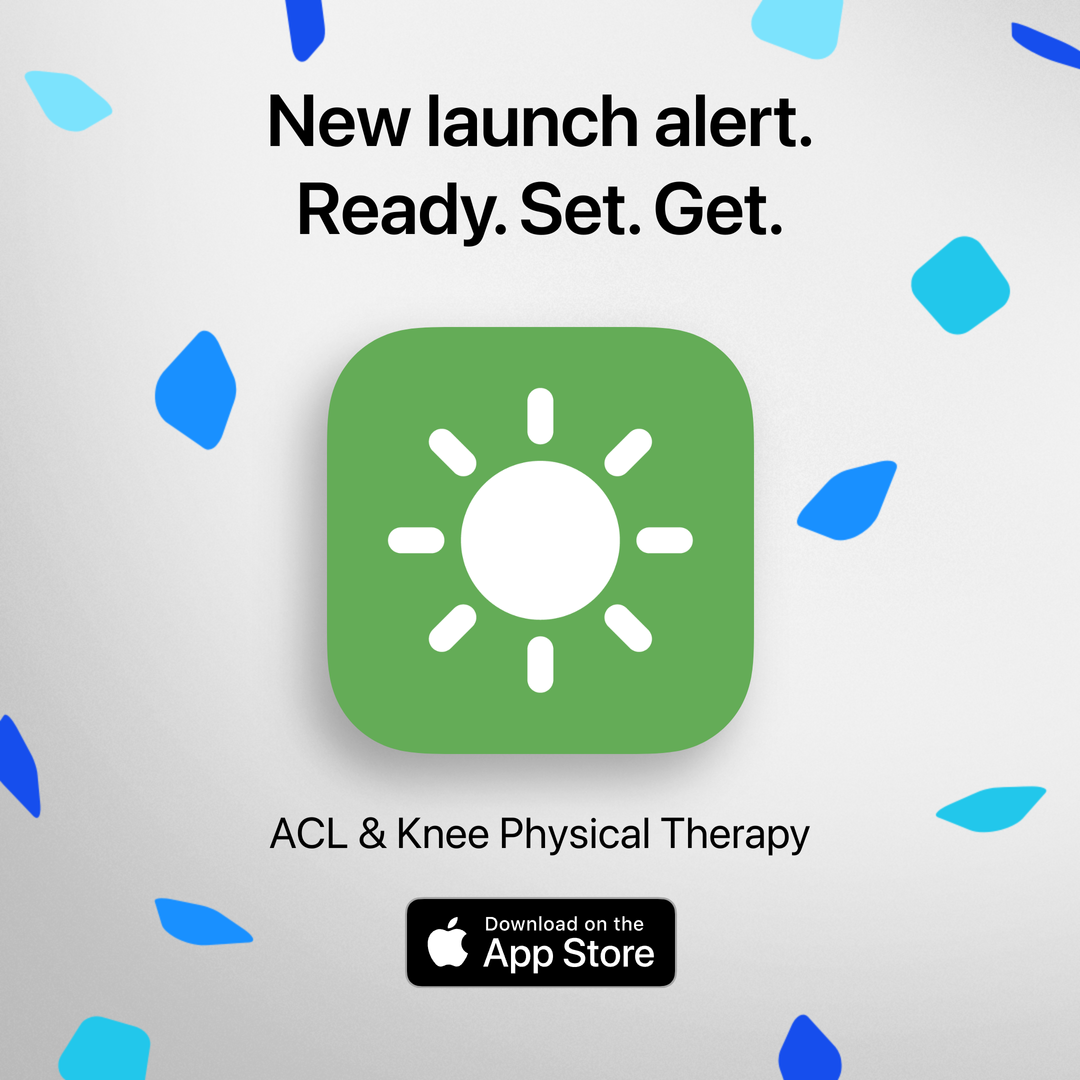Introduction
A lot of scientific literature focuses on the pros and cons of operative and non-operative ACL management. In previous blogs, you will find information on the different types of ACL surgery and their benefits. In this blog, I will provide information on the benefits and limitations of non-operative ACL rehabilitation. Non-operative ACL rehabilitation involves treating the ACL injury using progressive physical therapy. Surgery is not involved in this treatment plan.
What does research say about the benefits and limitations of non-operative ACL rehabilitation?
Nowadays, there is a lot of scientific research focusing on comparing the benefits and limitations of non-operative ACL rehabilitation, but the information is presented in a very medical and scientific manner. For the purposes of this blog, I will condense information from multiple research papers into a shorter summary.
- In a study comparing operative and non-operative ACL treatment, 100 patients were randomized between a patellar tendon graft treatment (44 males and 6 females; mean age 27.9 years) vs. a non-operative rehabilitation program (31 males and 19 females; mean age 29.8 years). After 5 years, 46% of the patients in the non-operative group showed better muscular conditioning with improvements in upper thigh muscle (quadriceps) thickness, compared to 34% patients in the operative group[11] In the same study after a 5 year follow-up only 16% of the patients in the non-operative group reported a normal knee (take their definition of what a normal knee means) compared to 50% in the operative group. Secondly, orthopaedic examinations showed 64% operative patients reported more stability in the knee with no forward-backward movement of the knee, compared to 8% of the non-operative patients.[11]
- In a follow-up study examining the effects of non-operative ACL treatment, 29 Alpine Skiers (mean age 43 years) with an ACL injury underwent orthopaedic testing for their knee and were followed after 2 years. 6-12 weeks after their injury, 11 patients (6 males and 5 females) showed knee instability (Lachman test Grade 2+). After 2 years, 10 of these patients showed better knee stability (Lachman test Grade 0-1+).[4] In a long-term follow-up study, a total of 728 patients were equally divided into an ACL-tear group without ACLR surgery (364 patients; 180 men/184 women; mean age 31.5 years) and a non-ACL tear group (364 patients; 180 men/184 women; mean age 30.9 years). Follow up for the ACL-tear group was 14.3 years and the non-ACL tear group was 15.9 years. Results showed that patients treated without ligament reconstruction were 18 times more likely to have a second meniscal tear, 14 times more likely to develop arthiritis and 5 times more likely to have a total knee arthroplasty (knee replacement surgery).[10]
- In a study examining the effects of non-operative ACL rehabilitation 48 patients (30 males and 18 females, mean age 31.8 years) underwent a non-operative ACL treatment program. They had an MRI test conducted after 11.5 months, and a clinical follow-up after 21.5 months. Before the study began, 51% patients had instability in the injured knee (Grade 1 on the Pivot shift test), but during the clinical follow-up, 21 months later, 76% patients showed no instability of the knee (Grade 0 on the Pivot shift test)[2]. In a comparative study examining the difference between operative and non-operative ACL rehabilitation, a total of 54 patients (44 males and 10 females) were recruited. 36 patients (mean age of 25 years) underwent the BTB-ACL reconstruction surgery (Group 1); whereas, 18 patients were given non-operative ACL management (Group 2). All patients completed a follow-up appointment after 17-20 years and results showed that 56% of the patients that did non-operative ACL management suffered from severe Osteoarthiritis with pain and [stiffness in their injured knee](https://curovate.com/blog/why-is-my-knee-still-stiff-a-year-after-a-total-knee-replacement/), compared to 16% of the patients that received ACL bone-patellar bone surgery.[6]
In this blog, a lot of information is provided to help you make a decision about undergoing an ACL reconstruction operation, or not! To help you carry out a non-invasive and highly accessible non-operative rehabilitation program, check out our ACL physical therapy app!
Curovate is for ACL, knee replacement, or hip replacement recovery. It provides you with guided exercises, rehab reminders, progress tracking, and can even measure your range of motion, all from the convenience of your phone. Click on the links below!
If you need further customized assistance during your surgery or injury recovery check out our Virtual Physical Therapy page to book your 1-on-1 online physical therapy session.


Other Related Blogs
- How do I know I tore my ACL? The 5 most common signs and symptoms of an ACL injury
- Why is my knee numb and tingly after ACL surgery?
- Can an ACL injury lead to arthritis in the future?
- ACL Surgery Pain Timeline: Pain After ACL Reconstruction Surgery
- Should I be experiencing pain when I do my rehabilitation exercises?
- ACL Social Support
- Why Should I Exercise before My ACL Surgery- the Importance of ACL Prehabilitation
References







